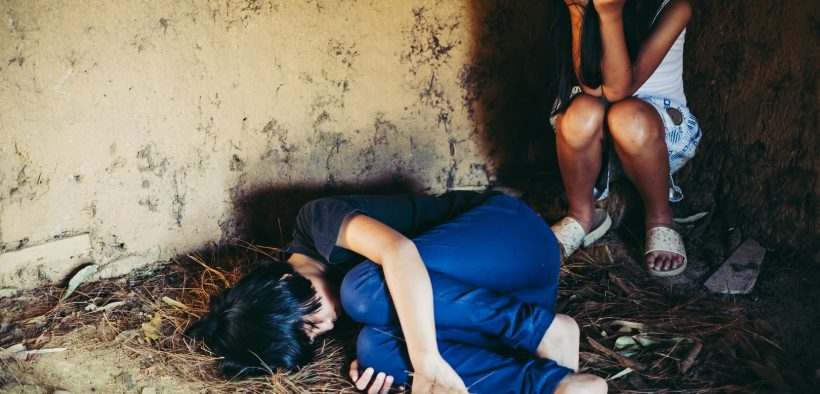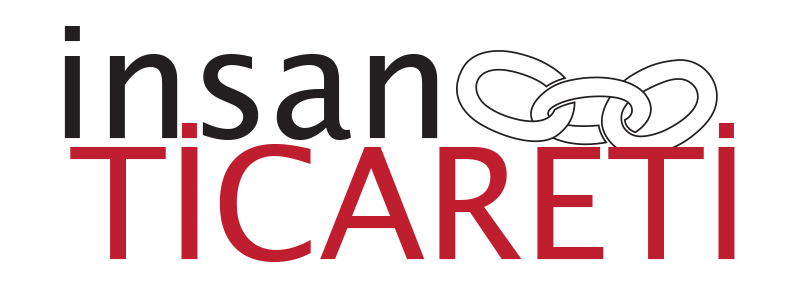Human Trafficking
Share

Trafficking in human beings, in the basic sense, involves a variety of women, men, girls or boys. It is the situation where they are forced to act against their will by being detained for the purpose of exploitation or abuse in areas.
In addition to the “United Nations Convention Against Transnational Organized Crime”, which was prepared and signed by the consensus of the party countries under the umbrella of the United Nations in 2000, the Prevention of Trafficking in Human Beings, Especially Women and Children, Human trafficking in Article 3/a, “..with the use of force or threat of force or in any other way coercion, kidnapping, cheating, deception, abuse of influence is out of desperation. The acquisition, transportation, transfer, hosting or receipt of persons for the purpose of exploitation by gaining or benefiting from that person or others in order to gain the consent of those who have the authority to benefit or control over another” . The term abuse is defined as, at a minimum, the exploitation of the prostitution of others or other forms of sexual abuse, forced labor or service, bondage or similar practices, servitude, or the removal of organs”.
In some geographies, due to reasons such as war, famine, disease, economic crisis or political turmoil, people become vulnerable to exploitation by human traffickers in order to have a better life. These people, who are deceived by promising a better life, opportunities and a future, are subject to restriction of their freedom, forced labor, child abduction, service, begging, servitude or slavery, organ removal/stealing, forced or young marriages, and guns at a young age. they are exposed to acts such as being taken under. Human traffickers use many methods such as borrowing money, confiscating their identities, threatening, exerting pressure or using violence and deceiving them to ensure these enforced practices. Exploitation can take place in the victim’s home country, during immigration, or in a foreign country. In particular, irregular migrants constitute a significant portion of the victims identified in most regions. In this sense, human traffickers usually go after people who are marginalized, impoverished or forced to migrate.
The number of human trafficking victims, which was approximately 31,000 annually worldwide in 2008, has exceeded 100,000 annually due to the socio-economic effects of the Covid-19 epidemic, when we look at the period of 2018 and beyond. It is predicted that the global increase in human trafficking will continue. Although it happens in every country and every region, human trafficking remains a covert crime, with traffickers working in the dark corners of the internet and in the midst of the global economy to trap victims for sexual exploitation, forced labor, domestic slavery and other forms of sexual exploitation. Five of every 10 victims identified worldwide are adult women and two are girls. Again, approximately one third of the identified victims are both girls and boys, while 20 percent are adult males. Most of the women identified in 2018 were abducted for the purpose of sexual exploitation, while the men identified were trafficked mainly for forced labor. However, a significant proportion of men identified have been trafficked for sexual exploitation or other forms of exploitation. In this context, recent research shows that LGBTQI+ children and young adults may be particularly vulnerable to and, in some cases, victims of trafficking for forced labor and sexual exploitation.
“Cinsel sömürü veya zorla çalıştırma harici mağdurlar, suç ortaklığına zorlanma, dilendirilme, zorunlu evlilikler, bebek/çocuk satışı, organların yasadışı alınması/çıkarılması ve bunlardan bir kaçına aynı anda maruz kalma gibi farklı istismarlara maruz kalmaktadırlar.”
When we look at the structure of illegal traders, who are the other actors of human trafficking, it is seen that a wide variety of criminals and groups are involved in human trafficking. These traffickers include young men who force schoolmates into sexual exploitation or criminal activities, parents who exploit their children by begging or selling them, urban gangs and multi-tiered transnational organized crime groups, brokers who negotiate for children to work in rural or rural areas, or licensed multinational recruitment agencies. and legitimate companies. In this sense, it is revealed that human trafficking is carried out by actors with different organizational structures, and these actors can be divided into two broad categories: groups that fit the definition of organized crime groups and individual opportunistic traffickers operating alone or in cooperation with one or more traffickers.
With these groups, the illegal working areas of human traffickers are different today and the traffickers frequently operate on internet platforms. A wide variety of digital platforms are used by human traffickers to advertise deceptive job offers and to market or offer exploitation services to potential paying customers. Traffickers take advantage of publicly available personal information and take advantage of the anonymity of internet platforms and the difficulty of identification to communicate with victims. New methods of exploitation are carried out on digital platforms, as webcams and live broadcasting opportunities create new exploitation opportunities and reduce the need for victims to transport/transfer. With the help of the internet, traffickers can effectively target specific victims by actively tracking and ‘hunting’ on the internet or posting advertisements and waiting (fishing) those they deem fit or vulnerable to trafficking.
In this context, knowing the structure of human traffickers and who they are gains importance, and it changes the approach to victims differently in line with the working procedures of these structures. For example, dispersing a large, organized trafficking group may require specific anti-organized crime mechanisms, while addressing abuse in the context of a close relationship may require approaches more similar to those used in domestic violence cases. Knowing the profile of traffickers also informs the extent and impact of the crime and helps define the appropriate criminal justice response to the crime. Likewise, these approaches constitute a prominent point in terms of identification/rescue/rehabilitation of victims.
It is a known fact that human trafficking will increase as the global Covid-19 epidemic continues. Experts comment that the economic effects of the Covid 19 epidemic are of the same size as the economic effects and crises of the Second World War and the period before. 51% of the cases in this period became victims of human traffickers for economic reasons. An example of this situation and the increase in human trafficking activities during periods of unemployment and economic crises can be given as the Global Financial Crisis between 2007-2010. In a study, it was examined that the victims of human trafficking of Bulgarian origin were forced into illegal (forced prostitution) activities in the Netherlands, and it was found that with every rise in unemployment in Bulgaria, the Bulgarian victims of human trafficking in the Netherlands increased at the same rate. In this example, unemployment in Bulgaria acts as a push for victims, while job opportunities in the Netherlands act as an attraction.

